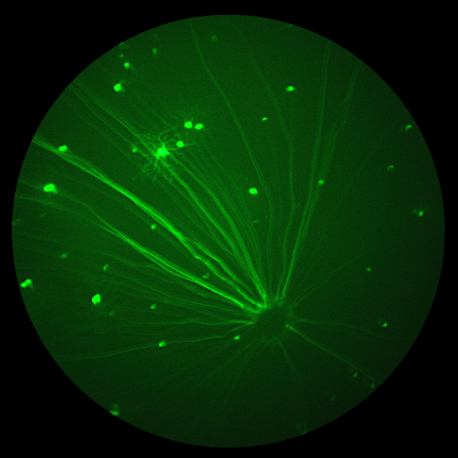Researchers at Yale University have uncovered a previously unknown lymphatic drainage system connecting the back of the eye to the brain, potentially revolutionizing our understanding of eye-brain immunity and opening new avenues for treating central nervous system diseases.
By studying the immune response to herpes simplex virus in the brain, the team led by Dr. Eric Song discovered that the posterior compartment of the eye has a unique lymphatic drainage pathway that connects to deep cervical lymph nodes – the same nodes that drain the brain and meninges. This creates a shared immune circuit between the back of the eye and the brain.
In their article “Compartmentalized Ocular Lymphatic System Mediates Eye–brain Immunity” published in Nature, April 2024, key findings include:
– Immunization into the back of the eye (intravitreal injection) protected mice against brain infections and tumors, while immunization through the front of the eye did not.
– The newly discovered lymphatic vessels run along the optic nerve sheath, draining fluid and immune cells from the back of the eye to the deep cervical lymph nodes.
– This drainage system could be modulated using the lymphatic growth factor VEGF-C, enhancing immune responses.
– Inhibiting this lymphatic pathway reduced immune responses to gene therapy vectors injected into the eye, potentially improving the efficacy of ocular gene therapies.
“This discovery reveals that the connection between the eye and brain is not only neuronal, but also immunological,” said Dr. Song. “It opens up exciting possibilities for using the eye as a route to generate protective immunity in the brain or to dampen unwanted immune responses.”
Fluorescent tracers injected into different compartments of the mouse eye, allowed researchers to map out the distinct drainage pathways. The Phoenix-MICRON was used to visualize and track in vivo fluorescence of the retinal vessels (green) and RFP transduction (red) in different LN ligation conditions.
While still in early stages, this research suggests potential new therapeutic strategies, such as ocular vaccination against brain infections or modulating eye-brain lymphatics to enhance gene therapies for retinal diseases. Further studies are needed to translate these findings to human patients.
This groundbreaking work fundamentally changes our understanding of eye-brain connections and immune surveillance of the central nervous system. It highlights the eye as an important immunological interface that may be leveraged for treating a variety of ocular and neurological conditions in the future.
Reference:
Yin, X., Zhang, S., Lee, J. H., Dong, H., Mourgkos, G., Terwilliger, G., Kraus, A., Geraldo, L. H., Poulet, M., Fischer, S., Zhou, T., Mohammed, F. S., Zhou, J., Wang, Y., Malloy, S., Rohner, N., Sharma, L., Salinas, I., Eichmann, A., Thomas, J.-L., Saltzman, W. M., Huttner, A., Zeiss, C., Ring, A., Iwasaki, A., & Song, E. (2024). Compartmentalized ocular lymphatic system mediates eye-brain immunity. Nature, 571, 7130-7138. https://doi.org/10.1038/s41586-024-07130-8





